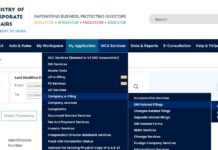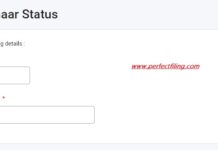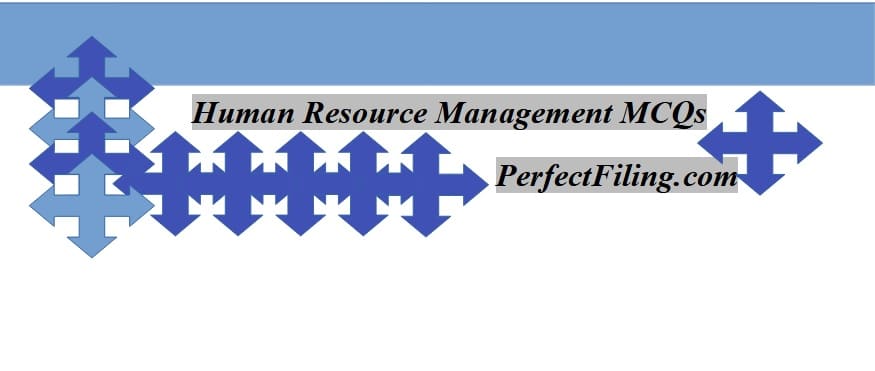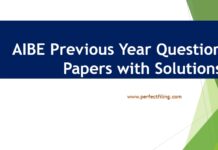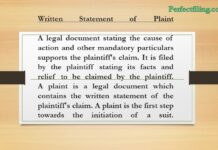12 functions of an Human Resource Management
Human Resources Management ensures the smooth functioning of an organisation. The process starts with formulating the right policies for the job requirements and ends with ensuring a successful business growth of the company. Therefore, HRM is an invisible agent that binds all the aspects of the organisation to ensure smooth progress.
In this modern era, organisations have become more people-centric than ever — especially since this approach pays great dividends in terms of enhanced employee performance and lower attrition rates. Human Resource Management or HRM plays a key role in allowing employers and organisations to reach their objective.
The functions of Human Resources Management hold great significance in the growth and overall development of the organisations. After all, when the employees grow and develop their skills, the organisation will automatically experience growth and expansion. Some of the primary functions of Human Resources Management include job design and job analysis, recruitment/ hiring and selection, training and development, compensation and benefits, performance management, managerial relations and labour relations.
1) Which of the following is the correct abbreviation of HRM?
- Human Resource Management
- Human Resourcefulness Management
- Human Relation Management
- Humanistic Relation Management
Answer Human Resource Management
Reason : Human resource management is strategic planning followed by several organizations that focus on recruiting, managing, and guiding newly hired employees.
2. __________ is considered as first wage incentive plan in the modern era of the industry.
- Barth plan
- Halsey plan
- Gantt task plan
- Taylor’s differential piece-rate plan
Answer Taylor’s differential piece-rate plan
Reason : None.
3. Which of the following is involved in the in-basket training?
- Simulation
- On-the-job training
- Vestibule training
- Coaching
Answer Simulation
Reason: In-basket training is a kind of exercise that is accompanied by the organizations while hiring and promoting an employee.
4. Under which of the following methods, common factors related to all jobs are identified?
- Merit
- Ranking
- Factor comparison
- Point
Answer Point
Reason: Under the Point method, common factors related to all the jobs are identified. It identifies all the possible job factors under primary groups (i.e., skill, effort, responsibilities, working conditions), typically up to five groups, where each factor is assigned with a dollar value (as opposed to pointing value).
5. Which of the following involves one to one interaction amid the administer and the participant?
- Motivation
- Counseling
- Training
- All of the above
Answer Counselling
Reason: To formulate self-difficulties like stress or emotional feelings caused due to heartbreaks or any professional/personal issues, the client set a meeting with the counselor to undertake a counseling session.
6. Stress is laid on __________ in the grid seminars.
- Professionalism
- Training and Development
- Teaching
- All of the above
Answer Teaching
Reason: Stress is laid on teaching in the grid seminars. In general, the Grid Training refers to a comprehensive organizational development program, which was formerly developed by Blake and Mouton to put emphasis on the complete development of individuals, groups, and the organization as a whole.
7. Which of the following is enhanced by 360-degree feedback?
- Managerial decisions
- HR decisions
- HRD
- All of the above
Answer All of the above
Reason: 360-Degree Feedback enhances the quality of HR, Management, and HRD decisions.
8. What is the difference between the Japanese management system and other management systems?
- It is a system in contrast to the American management system.
- It is mainly concern with high quality and performance standards.
- It is encouraged to perform repetitively and reliably.
- None of the above.
Answer It is a system in contrast to the American management system.
Reason: Japanese management system emphasizes creating skilled workers by making them adapt to organizational changes, as and when required.
9. What is included in the content of the job description?
- Skills and educational qualification
- Job title and work environment
- Both (a) and (b)
- None of the above
Answer Job title and work environment
Reason: The job description provides all the desired information which is required for evaluating a job. Job analysis is a systematic process that collects all the relevant statistics about the job for articulating job description and job specification, required for selecting an employee, providing job satisfaction and motivation, etc.
10. What does job evaluation seek?
- Evaluating the importance of different jobs within the organization.
- Evaluating employee’s performance of their respective job profiles.
- Determining the relative worth of various jobs within the organization in monetary terms.
- Establishing the hierarchy of different job profiles in the organization.
Answer Determining the relative worth of various jobs within the organization in monetary terms.
Reason: A job evaluation refers to an efficient way of defining the value of a job in contrast to other jobs within an organization.
11. How are the union leaders elected at different federations?
- based on employer’s recommendations
- Based on the seniority
- Based on political considerations
- Based on the democratic principle
Answer Based on the democratic principle
Reason: Union leaders at different levels and federation get elected on the basis of democratic principle. Organizational democracy refers to the system of organization, which is more focused on freedom than that of fear and control.
12. Which of the following pairs in the given sequence represents the initial as well as the final step incurred in the T&D program?
- Evaluating T&D program followed by implementing it.
- Determining the need for the T&D program and then evaluating the T&D program.
- Determining the need for the T&D program followed by designing the T&D program itself.
- Designing the T&D program and then implementing it.
Answer Determining the need for the T&D program and then evaluating the T&D program.
Reason: The (T&D) program, which is abbreviated as “Training and Development,” is one of the most powerful and essential programs for organizations as it makes it easier to make an improvement and develop the skills and knowledge of their employees.
13. Which of the following refers to the term quality improvement?
- A team effort.
- Achieved by the quality inspector.
- Zero things went wrong.
- Tough job; somewhat impossible task.
Answer Achieved by the quality inspector.
Reason: Quality improvement can be identified as a structured approach that helps in assessing the performance of systems and processes, followed by determining if there is any need for improvement in both functional and operational areas.
14. For closure, each worker has to compensate with __________ average pay for each preceding year of completed service.
- 20 days
- 15 days
- 25 days
- 30 days
Answer 15 days
Reason: For closure, each worker has to compensate with 15 days average pay for each preceding year of completed service. The retrenched employee must be provided with 15 days of average pay for a year of continuous service or any part thereof in excess of six months.
15. Which of the following are one of kind of skills inventory, regression, replacement charts, Markov analysis?
- Training plan
- Retention plan
- Redundancy plan
- Forecasting methods
Answer Forecasting methods
Reason: Forecasting refers to a process of formulating the predictions of upcoming events, which requires historical data.
16. Why is the career path in Japanese employee management non-specified?
- Rotational job results in providing a benefit such skills that are necessary for top-quality executives.
- At the time of induction, the employees within the organization get exposure to switch their careers in different job domains and get themselves trained to have hands-on trending technologies.
- In order to keep the employee up to date, the Japanese industries offer rotational jobs.
- Japanese management system emphasizes creating skilled workers by making them adapt to organizational changes as and when required.
Answer Japanese management system emphasizes creating skilled workers by making them adapt to organizational changes as and when required.
Reason: None.
17. What is meant by the factual statement of the duties and responsibilities?
- Job analysis
- Job specification
- Job evaluation
- Job description
Answer job description
Reason: The job description provides all the desired information which is required for evaluating a job. Job analysis is a systematic process that collects all the relevant statistics about the job for articulating job description and job specification, required for selecting an employee, providing job satisfaction and motivation, etc.
18. What are the possible factors that help in understanding the nature of a human being?
- As per one’s behavior at his/her workplace.
- Based on how successfully a management team influences an individual employee or a group.
- With the help of human behavior’s determinants.
- By studying the human behavior of each employee in alliance with the organization.
Answer As per one’s behavior at his/her workplace.
Reason: The following factors help understand human nature:
- Tasks and workload patterns
- Working environment
- Leadership quality
- Availability of resources
- Skills acquired by an individual
- Employee attitude, risk tolerance, and personality
19. What do you understand by the written record of duties, responsibilities, and conditions of a job?
- Job enrichment
- Job ranking
- Job enlargement
- Job description
Answer Job description
Reason: A job description refers to a written record of duties, responsibilities, and conditions, including a complete informative portrayal in terms of scope, tasks, duties, obligations, and work environment for any specific job profile.
20. What is the ‘Laisezz Fair’ viewpoint?
- A view popularized by Ronssean, Bentham, and Hobbes.
- A minimum of public intervention in economic activities.
- The business enterprise must get the opportunity to earn more profits.
- The change in the concept of labor from the commodity approach to the human concept.
Answer A minimum of public intervention in economic activities.
Reason: None.
21. Which of the following provides necessary information for job evaluation?
- Job Enrichment
- Job Description
- Job Ranking
- Job Enlargement
Answer Job Description
Reason: The job description provides all the desired information which is required for evaluating a job. Job analysis is a systematic process that collects all the relevant statistics about the job for articulating job description and job specification, required for selecting an employee, providing job satisfaction and motivation, etc.
22. A/An __________ is considered to be a vertical move in terms of rank and responsibilities.
- Appraisal
- Reward
- Increment
- Promotion
Answer Promotion
Reason: A promotion is considered to be a vertical move in terms of rank and responsibilities. The act of promotion elevates an employee to a new position offering higher pay, privileges, or status than the previous one. It mainly refers to the vertical movement in terms of rank and responsibility.
23. A/An __________ is a plan or a program scheme that helps to motivate an individual or a group to deliver outstanding performance.
- Promotion Scheme
- Incentive Scheme
- Reward
- None of the above
Answer Incentive Scheme
Reason: An incentive scheme is a plan or program that motivates an individual or group performance. Incentive schemes attempt to link at least a portion of pay to job performance to encourage higher productivity. Incentives, as often called, should be aligned with the behaviors that help achieve organizational goals or performance. Incentives are either individual or group (organization-wide).
24. What is defined as a record of outcomes resulting from a particular job or an activity at a specific time?
- Evaluation
- Work function
- Performance
- None of the above
Answer Performance
Reason: Performance can be defined as a set of outcome records generated by a specific job function or activity during a particular time period. The assessment of employee’s performance discloses one’s contribution company’s objectives.
25. Which of the following is the correct abbreviation of MPDQ?
- Modern Positions Developed Qualitatively
- Management Process Descriptive Questions
- Management Position Description Questionnaire
- Methods for Personality Development Questions
Answer Management Position Description Questionnaire
Reason: The MPDQ, which stands for Management Position Description Questionnaire, refers to an inquiry form that is utilized in human resource management for analyzing the management positions.
26. Which of the following is evolved in staffing?
- Termination
- Estimation of workload
- Personnel appointments and placements
- All of the above
Answer All of the above
Reason: Staffing is a constant process that finds, selects, evaluates, and develops a healthy relationship on the work front between the present and forthcoming employees.
27. What does quantitative technique refer to?
- Waiting line problems and the queuing theory
- Gaming, Game theory and Probability theory
- Models, simulation, and resource allocation technique
- All of the above
Answer All of the above
Reason: None.
28. What is mean by decision in management?
- To formulate a proper conclusion after considerations.
- A decision that looks out for the alternatives.
- A decision is the outcome of a group of people or an individual.
- All of the above.
Answer To formulate a proper conclusion after considerations
Reason: None
29. Which of the following aims to put the financial measure on an organization’s intellectual capital?
- Exchange of knowledge
- Financial knowledge
- The consortium
- None of the above
Answer Exchange of Knowledge
Reason: Knowledge exchange aims to put a financial measure on an organization’s intellectual capital. Information and knowledge can be defined as today’s thermonuclear weapons. Knowledge is stronger and more valuable than natural sources, huge factories, or swollen bank accounts. Organizations perform by using three types of capital: Physical Capital, Financial Capital, and Intellectual Capital.
30. Which of the following tells the correct importance of controlling?
- Power to influence people’s behavior
- Process of regulating the activities
- An important mental process on the part of the manager
- To ensure that all of the activities are coordinated as per the plan.
Answer To ensure all of the activities are coordinated as per the plan.
Reason: The process of controlling helps to achieve the organizational goals and objectives.
31. Which of the following takes a full interest in the process of strategic planning?
- Training & Development
- Quality Control
- Human Resource
- Production
Answer Training & Development
Reason: The training & Development team takes full part in the strategic planning process. It identifies the target that an organization is trying to accomplish and enlists the desired steps that are needed to encounter while reaching the target.
32. What is the scope of Human Resource Management?
- Performing training and development sessions for employee growth.
- Maintaining good impersonal industrial relations and worker’s morale for companies’ productivity.
- Accomplishing advanced research in behavioral sciences, new ideas in man, management, and advances in the field of training and development.
- None of the above.
Answer Accomplishing advanced research in behavioral sciences, new ideas in man, management, and advances in the field of training and development.
Reason: The scope of human resource management refers to all the activities accompanied under the HRM, which are as follows:
- Human Resource Planning
- Job Analysis Design
- Recruitment and Selection
- Orientation and Induction
- Training and Development
- Performance Appraisal
- Compensation, Planning, and Remuneration
- Motivation, health, safety, and welfare
- Industrial relations.
33. How many factors were identified by Pettigrew & Whipp to manage the successful change?
- Four
- Five
- Three
- Six
Answer Five
Reason: Pettigrew & Whipp postulated five key factors such as environmental assessment,” “leading change,” “linking strategic and operational change,” “human resources as assets and liability,” and “coherence” that are needed to manage the change. It is one such important factor, which is being shared among the high organization.
34. Who suggested that Human Resource Strategy isn’t as effective as it was supposed to be?
- Tony Groundy
- Peter Ducker
- Anonymous
- John Zimmerman
Answer Tony Groundy
Reason: Tony Groundy suggested that Human Resource Strategies are not much effective. Mainly HR Strategy (Human Resource Strategy) is designed for a long-term plan created to achieve objectives in the field of human resource and human capital management and development within the organization. Human Resource strategy is one of the outputs of strategic management in the field of human resources management.
35. Which of the following issues tends to be well disguised?
- Territorial
- Social
- Political
- Economical
Answer Territorial
Reason: Territorial issues tend to be well disguised. Sales operations adjust territories at least annually and usually include input from first-line managers, who bring local knowledge to the table. When making adjustments to territories, they consider workload, relationships, and even sales rep characteristics such as tenure and experience.
36. Developing characteristics of people are needed to run business in __________.
- Short term
- Medium term
- Long term
- All of the above
Answer Long term
Reason: The developing characteristics of people need to run business in the long term. The long-run refers to the time horizon required for a producer to have flexibility over all relevant production decisions.
37. What are those aspects on which the HR professionals apply the risk management techniques?
- HR Competencies
- HR Strategies
- Both (a) and (b)
- None of the above
Answer HR Strategies
Reason: The Human Resource Strategy refers to an overall plan of a business that helps manage the human capital to align it with its business activities. It sets a direction for all the major areas of HR that includes the hiring process, performance appraisal, development, and compensation.
38. What does a job specification include?
- Personal characteristics
- Physical characteristics
- Psychological characteristics
- All of the above
Answer All of the above
Reason : In general, a job specification labels the knowledge, skills, education, experience, and abilities required in a person for the desired job.
39. How has HRM become one of the highly focused jobs?
- It focuses on obtaining as well as maintaining a satisfied workforce.
- It results in maximum output with the increased customer satisfaction.
- It promotes group satisfaction with individual development.
- Optimum utilization of manpower by motivation and improving efficiency.
Answer It results in maximum output with the increased customer satisfaction.
Reason: None
40. The business side of the process begins with the strategic __________ as one of the guiding frameworks.
- Policy
- HR
- Plan
- All of the above
Answer Plan
Reason: The business side of the process begins with the strategic plan as the guiding framework. Strategic planning can be understood as a process of managing a company’s resources to meet the end results, which mainly involves setting up the objectives, a complete analysis of the competitive environment and internal organization, assessing strategies accompanied by ensuring that management has rolled out the policies across the organization.
41. Who laid the foundation of Human Resource Management practices?
- David C. McClelland
- Roethlisberger and Dickinson
- Peter Drucker and Douglas McGregor
- Elton Mayo
Answer Peter Drucker and Douglas McGregor
Reason: Peter Drucker and Douglas McGregor laid the foundation of HRM practices.
42. Which of the following is considered as strategic activity?
- Productivity
- Recruitment
- Planning
- All of the above
Answer Recruitment
Reason: Recruitment refers to a strategic activity as it mainly focuses on fascinating the desired candidates for the specific roles. Selecting is a process undertaken to recognize and select the eligible candidate for the desired job. So, we can conclude that recruitment is not an operational activity but plays a vital role in any organization’s strategic activity.
43. Which of the following fields requires a skilled HR professional?
- People handling
- Clarifying
- Both (a) and (b)
- None of the above
Answer Clarifying
Reason: HR professionals are required to be skilled in the field of clarifying fuzzy visions followed by providing feedback to the managers and the higher authority at the same time.
44. Human relation approach refers to __________
- An approach in which workers are facilitated with humanity at the workplace.
- A shared teamwork between the employee and the employer for solving problematic issues.
- Forming a group of people on the work front so as to inspire them to work collectively for the company’s growth in terms of social, economic, and psychological productivity.
- None of the above
Answer Forming a group of people on the work front so as to inspire them to work collectively for the company’s growth in terms of social, economic, and psychological productivity.
Reason: Human relations are defined as the study of group behavior for the purpose of improving interpersonal relationships as among employees.
45. Directing, being one of the preeminent functions of Human Resource Management that falls under __________
- Operative functions
- Technical functions
- Managerial functions
- Behavioral functions.
Answer Managerial functions
Reason: In order to meet the desired goals or the end results, the manager directs the workers by means of instructing, guiding, and overviewing their performance.
46. What is the need for Human Resource Planning?
- For undergoing an effective employee development program
- To represent a base for recruitment
- To represent a base for selection policy
- All of the above
Answer All of the above
Reason : Human resource planning is one of the most strategic functions incorporated by the Human Resource Management team, which analyzes its employees’ capabilities and the demand or supply of work in the market.
47. Which of the following components are reformed to support the strategies of human resource function?
- Control systems
- Appointment
- Rewards
- Job allotment
Answer (a) & (c)
Reason: In order to support the strategies of human resource functions, control systems and rewards are altered. Strategic human resource management is a kind of practice in which employees are fascinated, developed, rewarded, and retained for the growth of both the employees and the organization.
48. Finding ways to reduce __________ is a crucial responsibility of management.
- Stress
- Dissatisfaction
- Uncertainty
- None of the above
Answer Uncertainty
Reason: The primary role of a manager is to ensure the daily functioning of a department or group of employees.
49.Human factor can be defined as __________
- The entire concept of human behavior
- Interrelated Physiological, Psychological and Socio-ethical aspects of a human being.
- Micro and macro issues of socioeconomic factor
- None of the above
Answer Interrelated Physiological, Psychological, and Socio-ethical aspects of a human being.
Reason: None.
50. Which of the following correctly defines the Human Resource Department?
- Functional department
- Service department
- Line department
- Authority department
Answer Service Department
Reason : As the name suggests, the human resource department handles all the organization’s activities pertaining to the employees.
Evolution Cycle of the HR Function
Every Human Resources department develops along with the development and growth of the organization. The HRM evolves through 3 distinct stages where it begins as a Business Function, turns into a Business Partner and afterwards a Strategic Partner.
In every one of these cases, the job and responsibilities of the HR division evolve to be more strategic. At more elevated levels of maturity, the HR department can increase the value of the leadership potential, top talent, company goals, employee retention rate and long haul manageability of the association.
At each stage, the credits and worth added by the Human Resources department change and the mediums required for this will change . At any rate, HR in an association should be liable for overseeing employee information, finance, time management, and setting up organization strategies. The HR department handles the effectiveness of human resource strategies and should be incorporated into every decision making process in the organization.
As a business partner, HR’s job is to meet the “current business needs” with the goal that the association can develop at a quantifiable rate. At this stage, HR moves to competency-based recruitment, pay grades, sudden turn of events, correspondence and organization plan.
HR helps in formalizing the organization hierarchy (who does what and reports to whom). That done, it recognizes the skills essential for each work job. Further, it helps in characterizing programs that are essential for building up these abilities, recruitment strategies to assess the expertise levels and benchmarking the abilities against industry norms and contenders etc.
All out salary (finance and advantages) likewise turns into a centre territory where the HR assists the association with drawing in and holding talented employees by turning into a pioneer in paying the employees.
Utilizing the expertise database and the company structure, the HR work develops pay hikes, improves the preparation capacity and makes the recruitment work more receptive to the abilities required by the association.
Organizations that see their HR as a strategic business partner have faith in giving the full maturity of their HR work. Such organizations are centered around accomplishing leadership roles instead of a year-on-year development.
Importance of HRM:
Strategy management is an essential component of every organization and plays a critical aspect in human resource management. HR managers oversee strategies to guarantee that the organization meets its business objectives while also making major contributions to corporate decision-making, which includes assessments for present workers and projections for subsequent ones based on business requirements. HR is also the agency to contact if any form of professional problem emerges between workers. They guarantee that challenges and disputes are properly handled by examining the topic objectively and fostering good conversation to establish a solution. Furthermore, they assist employees in understanding various methods of creating productive work connections as well as the need not to allow personal judgment to affect their behaviour.
Features of HRM
1. A Part of Management Discipline
HRM is a crucial aspect of administration. Even though it is not considered a profession in itself, it is unquestionably a subject of study. Because HRM is part of the management process category, it largely relies on management concepts, methods and procedures when managing the human resources of almost any business segment.
2. Universal Existence
HRM is universal and is applicable everywhere, irrespective of the size, nature and variety of scopes.
3. Concerned with People
HRM is concerned with the management of human resources or human characteristics in a business segment. It oversees a variety of individuals, including workers/labourers, bosses, managers and other associated senior managers. As a result, HRM is described as the management of “people resources’ and their dedication to their jobs.
4. Action-oriented
Instead of record-keeping, written processes or regulations, the focus of Human Resource Management is “activity.” Employee issues are resolved by sensible policies.
5. Directed towards the achievement of objectives
HRM is focused on working to attain organizational goals. It also gives tools and procedures for properly managing the firm’s human resources.
6. Integrating mechanism
Among the most essential purposes of HRM is to identify the best way to achieve shared goals. It also helps to establish friendly relationships among employees at all levels of a business.
7. Development-oriented
HRM strives to optimize or maximize the usage of employees’ talents or potential. For all of this, it tailors the compensation structure to the demands of the personnel. It also influences staff training in order to improve their abilities. It makes every effort to fully use the capabilities of its people to serve the organizational goals.
8. Continuous processes
Human Resources Management is an ongoing process, it operates from the day an organisation is created until it is disbanded. It primarily focuses on managing the firm’s human capital, which is a continuous process rather than a one-time event or a bad transaction.
9. Comprehensive function
Human Resources Management can never be an isolated process since it involves all employees. No one is exempt from the periphery of HRM, regardless of his or her status, remuneration or kind of job.



